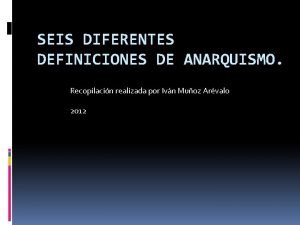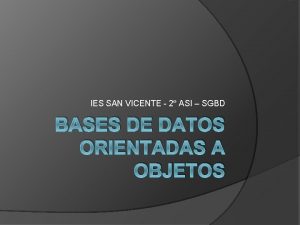1 Thinking ahead for Europe Jorge Nez Ferrer












- Slides: 12

1 Thinking ahead for Europe Jorge Núñez Ferrer, CEPS (Brussels) Public Hearing – “MFF mid-term revision - prospects for the EU budget for the second half of the MFF” 17 March 2016 – European Parliament CEPS_thinktank www. ceps. eu

2 ISSUES • Immediate pressures on the EU budget – repercussions on review and negotiations • Flexibility or capacity to bend backwards – solutions for today and tomorrow • Mid-Term: Potential main focus points • Changing the mindset on the budget -> Net balance mentality is today not reflecting the budget financial benefits at all.

3 Immediate Challenge • The EU budget had been flexed to the maximum • Over 12 billion Euro mobilised under all possible flexibility instruments • For this year room is VERY limited, we need solutions NOW • Use of unspent amounts is a minimum • We need to avoid ransacking H 2020 and CEF for flexibility • Whatever is done this year will affect the future

Mid Term Review • Main focus area: - More European Value Added • Much has been done, but spring cleaning is needed: • Many measures have accumulated based on the past use of the budget as deal breaker on unrelated issues • A review on the EVA of allowed measures and submeasures needs to be undertaken • Those with low EVA need to be opened to reform or deletion • Simplification: Measures with high EVA targeting European objectives could have same treatment as as centrally planned measures in terms of requirements and state aid rules. • Review the treatment of regional expenditures in European stability pact 4

Time get net balances out 5 a) The EU budget has reformed substantially, but the net balance approach is based on old objectives of local-value expenditure with limited co-financing. b) The EU Value Added of expenditures has increased substantially – many objectives are not local choices. c) The financial investment flows caused by the budget are large. EFSI mobilized funds alone similar to Cohesion Policy size, all FIs together much more. d) Many of the reinforced budget areas benefit also net contributors considerably. e) The new realities of the budget need to be reflected in the OR

EFSI example Infrastructure – First period 6

EFSI example - Pipeline 7

EFSI SME 8

RSFF 9

Research Funding FP 7 Impact on business high (x 13 according to EC and OECD modelling) Etc. etc. 10

11 WHO IS BENEFITTING FROM EU BUDGET? a) In terms of transfers of public Euro between treasuries, the net recipients b) In terms of funds mobilised – all and for the moment with a bias on wealthier MS, but this will move and shift. THUS: EVERYBODY

We need a new deal • The net balance approach is UNWARRANTED • We need a better budget for Europe – not for “Brussels” which is the preception • The budget needs to be able to respond to challenges – not by sacrificing already limited funding for Horizon 2020 and CEF • We need a budget that prioritises and develops JHA and key European objectives • If we want “real” own resources maybe we a need a more “real” European budget 12























